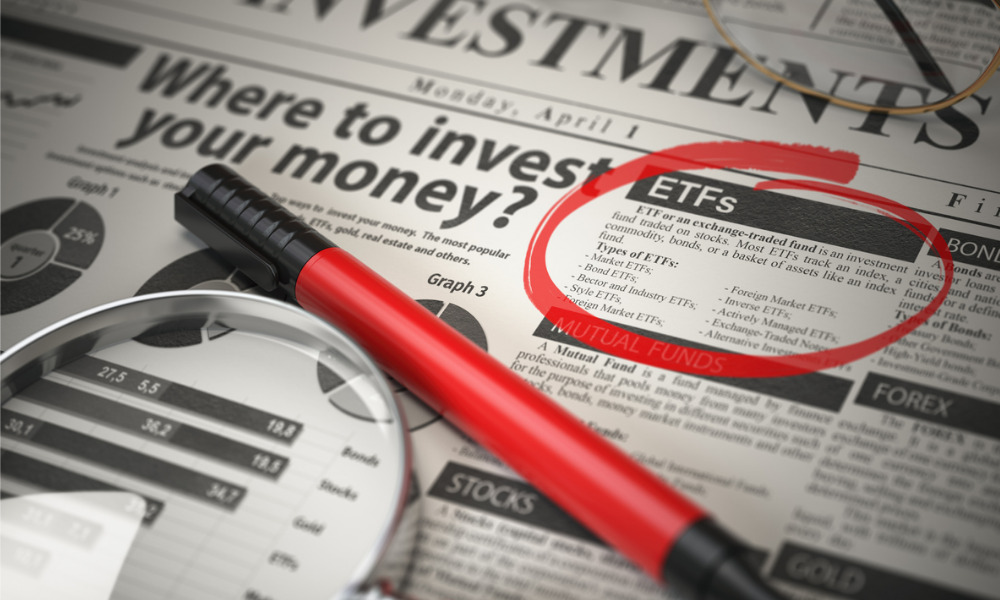Industry expert also urges advisors to consider altering traditional fixed-income weighting

Heading into 2022, Alfred Lee, a Portfolio Manager for BMO Exchange-Traded Funds (ETFs), has a number of portfolio picks and tips for those constructing portfolios.
He is bullish on North America, banks, energy, and recommended focusing more on blue-chip names.
“I think higher interest rates are going to weigh on higher growth technical names,” Lee, who is also Director and Investment Strategist for BMO ETFS told a BMO ETF Economic Forum on portfolio construction insights this week.
“I think it’s pretty unrealistic to assume that we’re going to get the same degree of return on the equity market, so investors definitely have to dial back their expectations,” he said. High single-digits are possible, but he sees four risk factors in the markets now compared to 2021.
The first three are tapering, central bank tightening, and sustained inflation, driven by supply chain rather than monetary issues.
“I think, we’re going to see either a supply chain issue or a demand side issue. Either way, I think we can see upward pressure on pricing on top of that,” he said, noting that depends on whether the pandemic lockdowns continue or economies reopen.
The fourth risk is the U.S. mid-term election, which historically has delivered half the half the normal Dow Jones returns.
“President Biden’s approval rating is about 33% right now, so there’s a lot at stake,” said Lee, before adding he’s optimistic the pandemic is beginning to end.
Markets have normalized now.
“Everything’s more fairly valued at this point, so it’s hard to pick areas that are easy wins,” said Lee. “I’m more bullish on North America because Asia is just so fragmented in how it will emerge from COVID. They’re going to have very different policies from country to country. North America’s more homogenized, even though it’s governed on the state and provincial level, so the U.S. and Canada are much better positioned.”
Lee recommended overweighting equities as interest rates rise since those are going to create a headwind for fixed income. But, he was pleased the Federal Reserve gave more notice ahead of its tapering to be more transparent. So, even though he expects to see rising rates, “I think it’s going to be more gradual than people think.”
He said BMO ETFs is screening for companies with high equity return, stable year-over-year earnings, low financial leverage, dependable business models, a competitive advantage in their fields, a strong balance sheet, and good pricing power so they can pass higher costs to consumers.
However, he said if a global authority, such as the World Health Organization, declares that we’ve reached the endemic, “that’s going to provide a huge lift to the market.”
In the meantime, Lee likes Canadian, over U.S., banks, but finds both well positioned. Their valuations are low since their earnings have grown exponentially and they’re increasing their dividends. If interest rates climb slowly, he expects positive economic growth, more loan and mortgage demand, and merger and acquisition activity and leveraged buyouts that are good for capital markets.
While he said there could be six Bank of Canada rate increases of ¼% each, he expected that could stretch over 2023 and possibly into 2024.
“A lot of the inflation issues right now are supply chain driven, so hiking the rates all at once doesn’t necessarily solve inflation,” he said. “If they choke out economic growth and are unable to put a stop to inflation, we’ve got a much bigger problem.”
Lee said fixed income currently has two key risks – inflation and higher rates. He suggested a portfolio of 85% public fixed income ETF to get cost-effective exposure to the fixed income market, 10% for a laddered preferred share ETF to hedge against rising interest rates, and 5% for short-term U.S. tips as a currency hedge.
“That’s a simple portfolio,” he said. “It’s easy to explain to clients and, for this environment, essentially mitigates the two main risks: rising interest rates and inflation.”
Lee also said the current alternative to stocks is alternatives. As interest rates increase and put pressure on fixed income, he said the 60/40 balanced portfolio needs to shift to 55/35/10 – with the 10 being alternatives such as REITs because they’re a good inflationary hedge that have done well, even though the office retail is undervalued right now. “We see a lot of clients doing that now,” he said.



